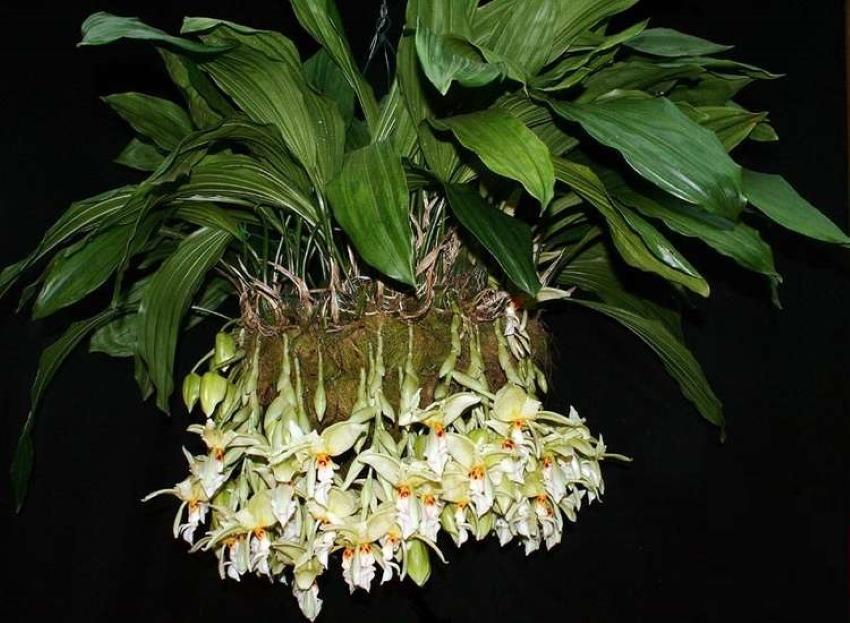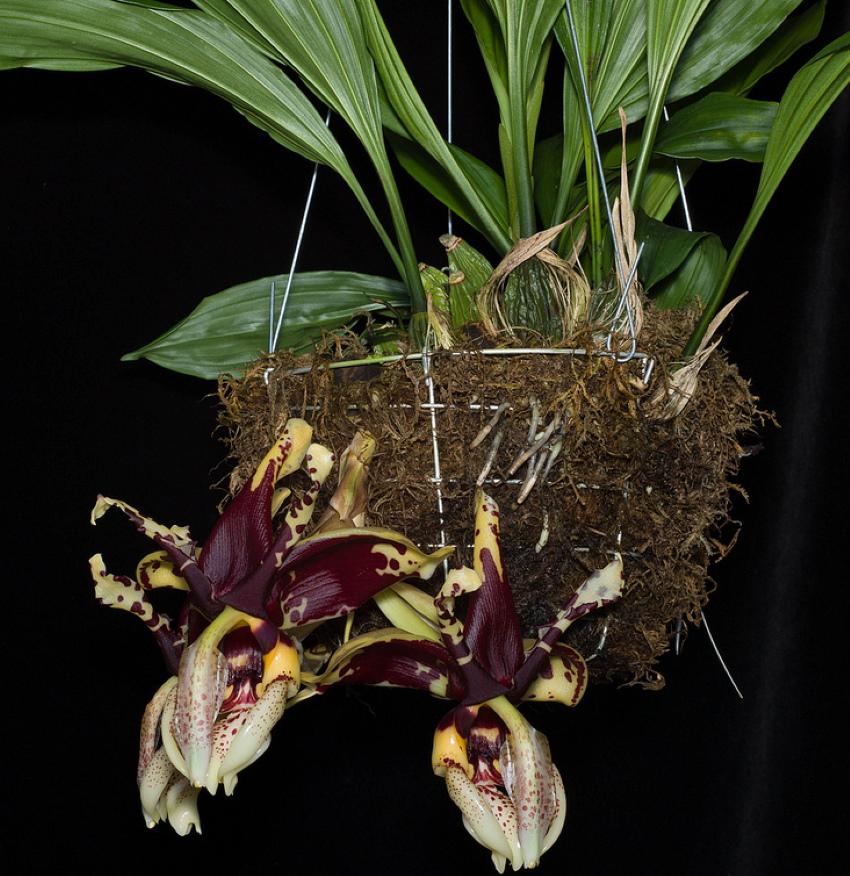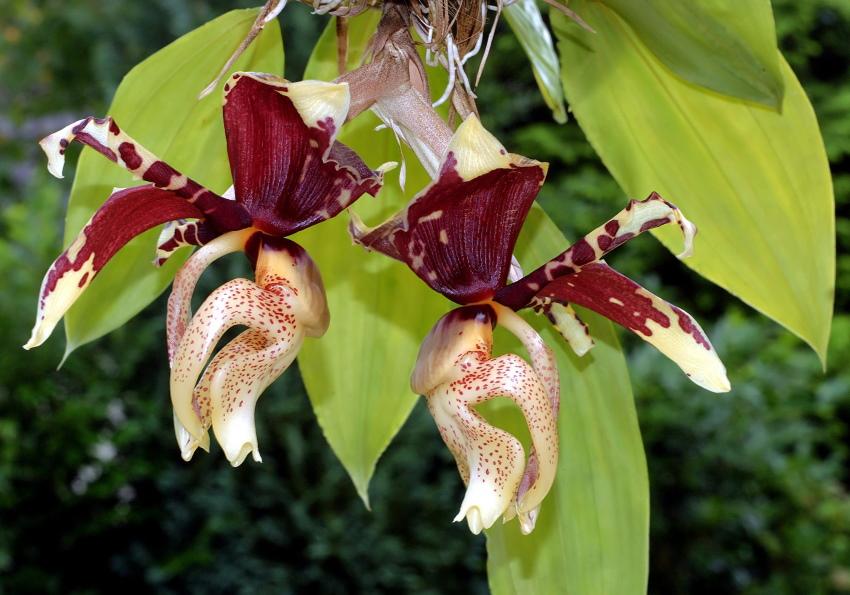How to care for the stangopea orchid at home to see its large flowers
 Many growers are afraid to start a stangopea, fearing its capricious nature. And completely in vain, because this epiphyte is not so capricious as it is commonly believed. If you grow phalaenopsis, then you already know the general rules on how to care for the stangopea orchid at home. Having satisfied her need for moisture, you can admire the gorgeous flowering, because this is one of the largest-flowered orchids.
Many growers are afraid to start a stangopea, fearing its capricious nature. And completely in vain, because this epiphyte is not so capricious as it is commonly believed. If you grow phalaenopsis, then you already know the general rules on how to care for the stangopea orchid at home. Having satisfied her need for moisture, you can admire the gorgeous flowering, because this is one of the largest-flowered orchids.
How stangopea differs from other orchids

Another feature of the stangopea is the peduncle. It appears at the base of last year's growth and is not erect, but hanging down. This allowed the orchid to be attributed to ampelous plants and to grow it in hanging pots.
But the most important advantage of the epiphyte is flowering. The average diameter of flowers is 17 cm, and there are also very large orchids, reaching 20 cm in diameter. Moreover, the flowers have an interesting structure: their lip has pronounced outgrowths that resemble horns. One arrow has about a dozen flowers. The color can be different, but it is always very bright and variegated, with a fancy pattern or speck on the petals and even sometimes on the lip.
For the interesting shape of the flowers and the flower stalks growing down, the stangopea is popularly called the bovine or inverted orchid.
Indoors, stangopea varieties are mainly grown with a pleasant and strong chocolate aroma with a light vanilla note. Although there are species with the opposite and completely intolerable smell. The orchid blooms in summer and each flower lives no more than 2 days. Perhaps this is the only drawback, but it is invisible, since the buds open one after the other.
How to care for the stangopea orchid at home
 Ampelous epiphytes should be grown in a special pot with holes through which the peduncle can crawl. These can be willow or plastic baskets with a lattice. Epiphyte feels best in a mixture of bark and sphagnum. It is lightweight, moisture-absorbing and will also serve as an additional fertilizer.
Ampelous epiphytes should be grown in a special pot with holes through which the peduncle can crawl. These can be willow or plastic baskets with a lattice. Epiphyte feels best in a mixture of bark and sphagnum. It is lightweight, moisture-absorbing and will also serve as an additional fertilizer.
In summer, the bush needs good, but diffused, lighting, while in winter it needs additional lighting. Regarding the temperature of the content, then for the establishment of the peduncle there must be a difference between day and night of 5-10 °. The general daytime values are no more than 30 °, the minimum nighttime values are not lower than 12 ° C.
Stangopea care consists in the usual procedures for epiphytes:
- Moderate watering, and it is better not in the sump, but by the spill method, so that excess water spills out immediately. The warmer the room, the faster the soil will dry out, and the more often watering is needed.
- Maintaining high humidity, ideally by installing a humidifier.
- Top dressing once a week with a mineral complex during the growth period (from May to September).
- Organization of rest in winter (lowering the temperature to 12 - 14 ° C, reducing the frequency of watering).
You can transplant a stangopea every 2 to 3 years, when the pot is filled with pseudobulbs. At the same time, reproduction is carried out by separating the bulbs. It should be borne in mind that they must be planted at least 5 pieces each.